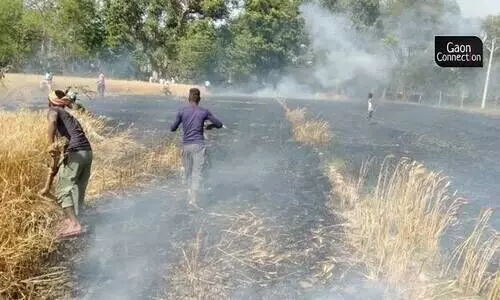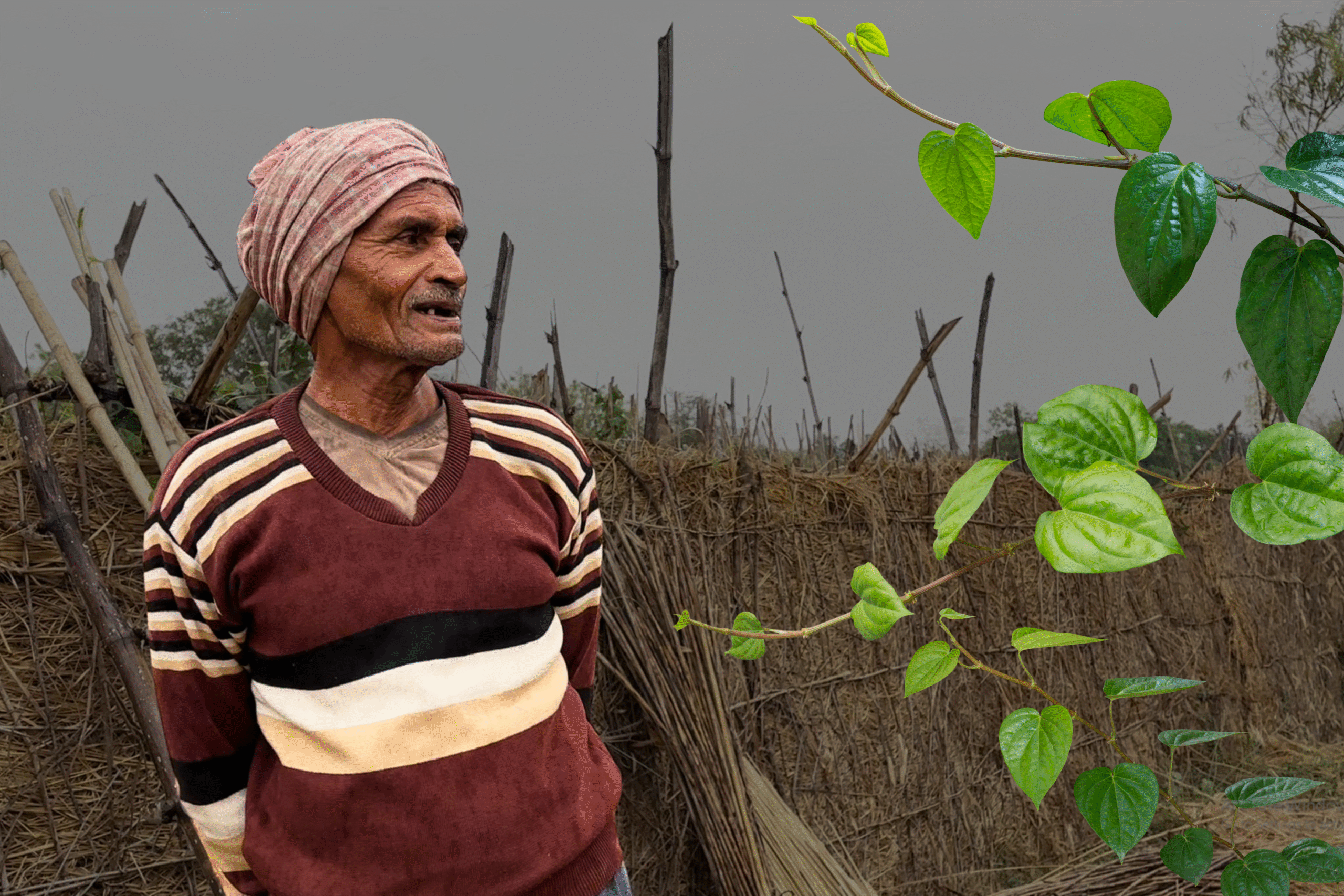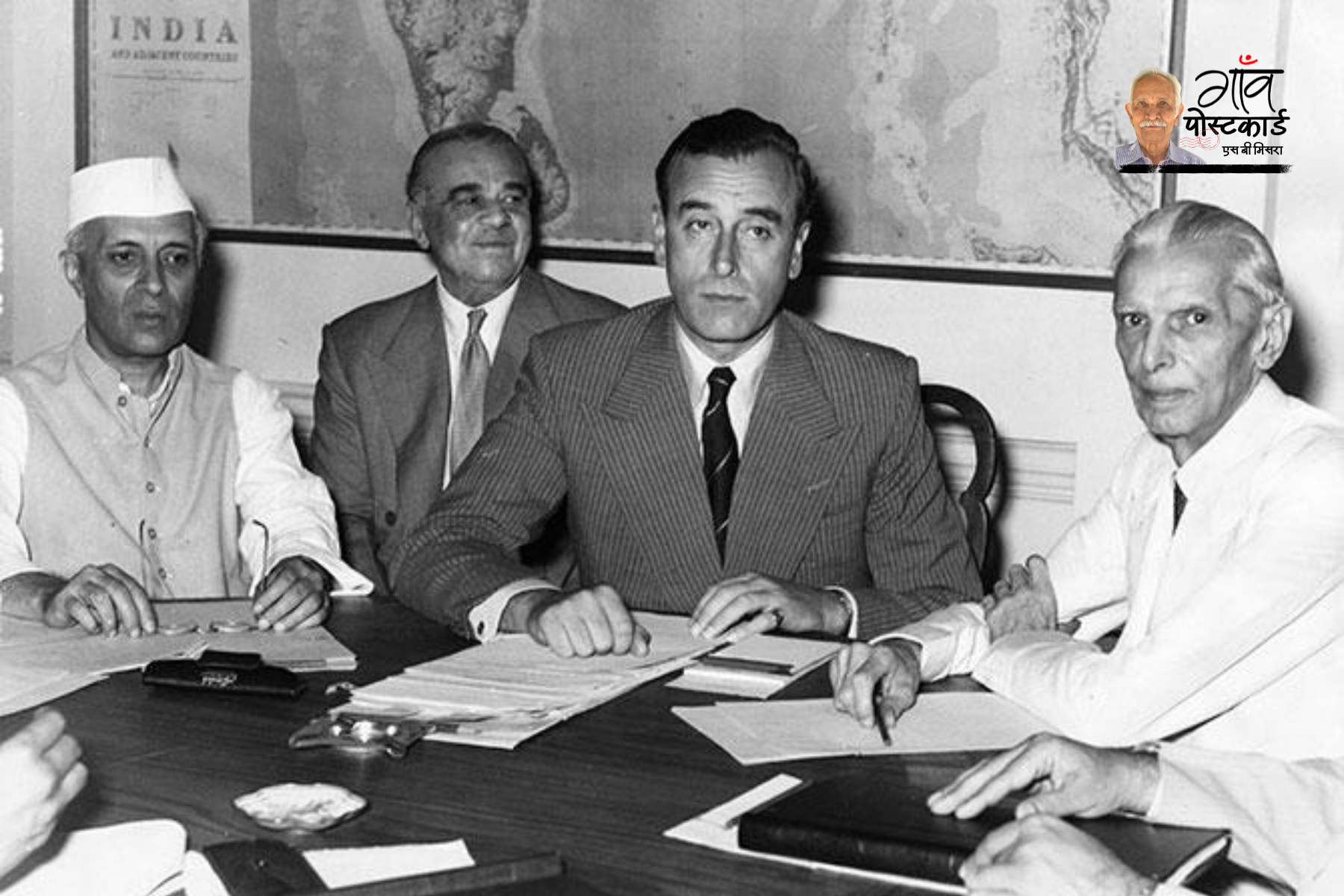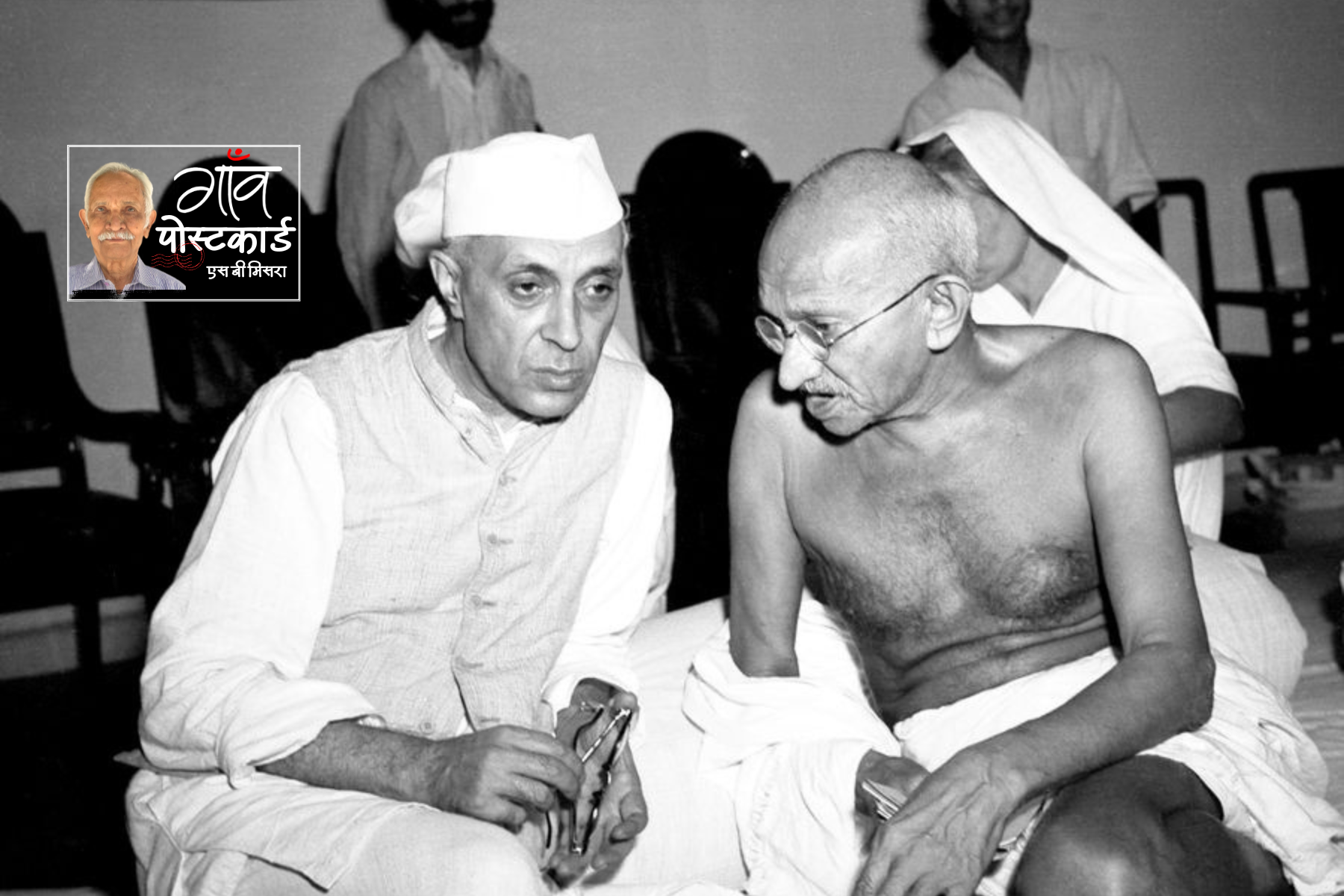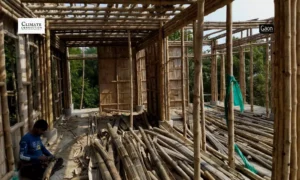Majhra (Unnao), Uttar Pradesh
It had cost 48-year-old Rooprani and her family members months to raise the wheat crop that was now ready to harvest. But it took just a handful of minutes before her 2.5 bighas of land was reduced to char. On April 18, Roopaani was left staring at ash where once 2.5 bighas of golden brown wheat stood.
“We had spent almost twenty thousand rupees in growing the crop and everybody from my household had put in hard labour to ensure that it grew well. All that is lost now,” Rooprani, whose village Majhra falls under Unnao district of Uttar Pradesh, told Gaon Connection. “Our hopes of a good harvest have turned into ashes, not a single grain of my wheat is left. Everything has been burnt down,” she lamented.
It wasn’t just the wheat crop which was lost to the raging fire. The engine of a harvester, winter bedding put to dry under the sun, small cottages built in the agricultural fields to store the grain were some additional losses suffered by Rooprani, whose only source of income is farming.
Reports of standing crops catching fire in the fields have also poured in from Chandauli in Uttar Pradesh and Faridkot in Punjab, too.
A severe heatwave is sweeping across the country, with several locations reporting temperatures above 40 degree Celsius (C). At some places, the mercury has crossed 45 degree C. In such extreme hot weather conditions, chances of crops catching fire also increase. And every year, during the peak rabi harvest season, several farmers suffer heavy losses.
In Uttar Pradesh, fire incidents are rampant in the months between March and June. According to the state’s Fire Service control room in Lucknow, on an average, 1,500 fire-related incidents are daily reported across the state. And majority of the cases involve crop fires, like it did with Rooprani’s land.
The most common reasons for crop fires are broken power cables, naked electricity supply wires, sparks from tractors, fire from stoves, careless smoking, and fireworks — and farmers whose livelihoods depend on these crops pay for it dearly.
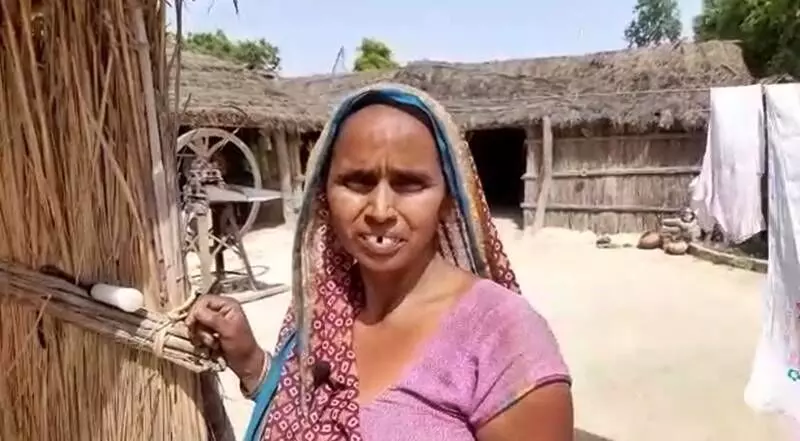
“We have no option but to now work as labourers in the fields of other farmers,” Pawan, 23-year-old son of Rooprani, told Gaon Connection in a dejected tone.
He said the family was looking forward to this year’s wheat harvest as due to the ongoing Ukraine-Russia war, global demand for wheat had increased and wheat was selling above the minimum support price (MSP) in India. “But ill-fated farmers like us have to now work as farm labourers to compensate for the losses in the next crop cycle,” said Pawan.
Meanwhile, last month Chief Minister Yogi Adityanath ordered that arrangements be made to prevent damage to wheat crops by accidental fires and provide relief to even those farmers not covered under the Crop Insurance Scheme.
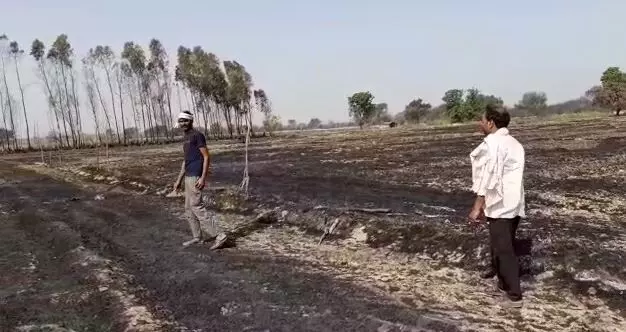
Meanwhile, the district fire officer in Unnao informed Gaon Connection that there are merely five fire stations in the district that has a population of 3,108,367 people.
Also Read: Russia-Ukraine war has wheat crop rates soaring in India; ‘unprecedented’ prices, say farmers
‘Delayed response of fire brigade ruined our crops’
The fire in Majhra, Unnao, on April 18, began as a small one in a forest far away from the village boundary. But in no time it grew into an inferno and engulfed an estimated 40 hectares of agricultural lands — majority of which were ready to harvest. These fields belonged to 20 farming households in the village, all of whom have lost their entire rabi crop.
Anirudhh Kumar, a 32-year-old farmer from Majhra village, was amongst the first to respond to the accidental fire, the cause of which is yet to be ascertained.
“As soon as we heard of a small fire in the forests near our village, we jumped into action. Some police personnel from the nearby police chowki (outpost) also rushed to our fields but we just couldn’t control the fire without fire engines…” Kumar told Gaon Connection.
“I own paanch beegha (a little over an hectare) of agricultural land. I had grown wheat on all of it. It cost me Rs 35,000 to cultivate my land. I have lost it all,” the 32-year-old farmer added.
There was anger in Kumar’s voice as he blamed his loss on the failure of the Uttar Pradesh Fire Service to respond quickly to their pleas for help.
“We dialled the agnishaman vibhag (fire department) to dispatch fire engines as it was too big to be put out by buckets and water pipes. The fire engine arrived almost
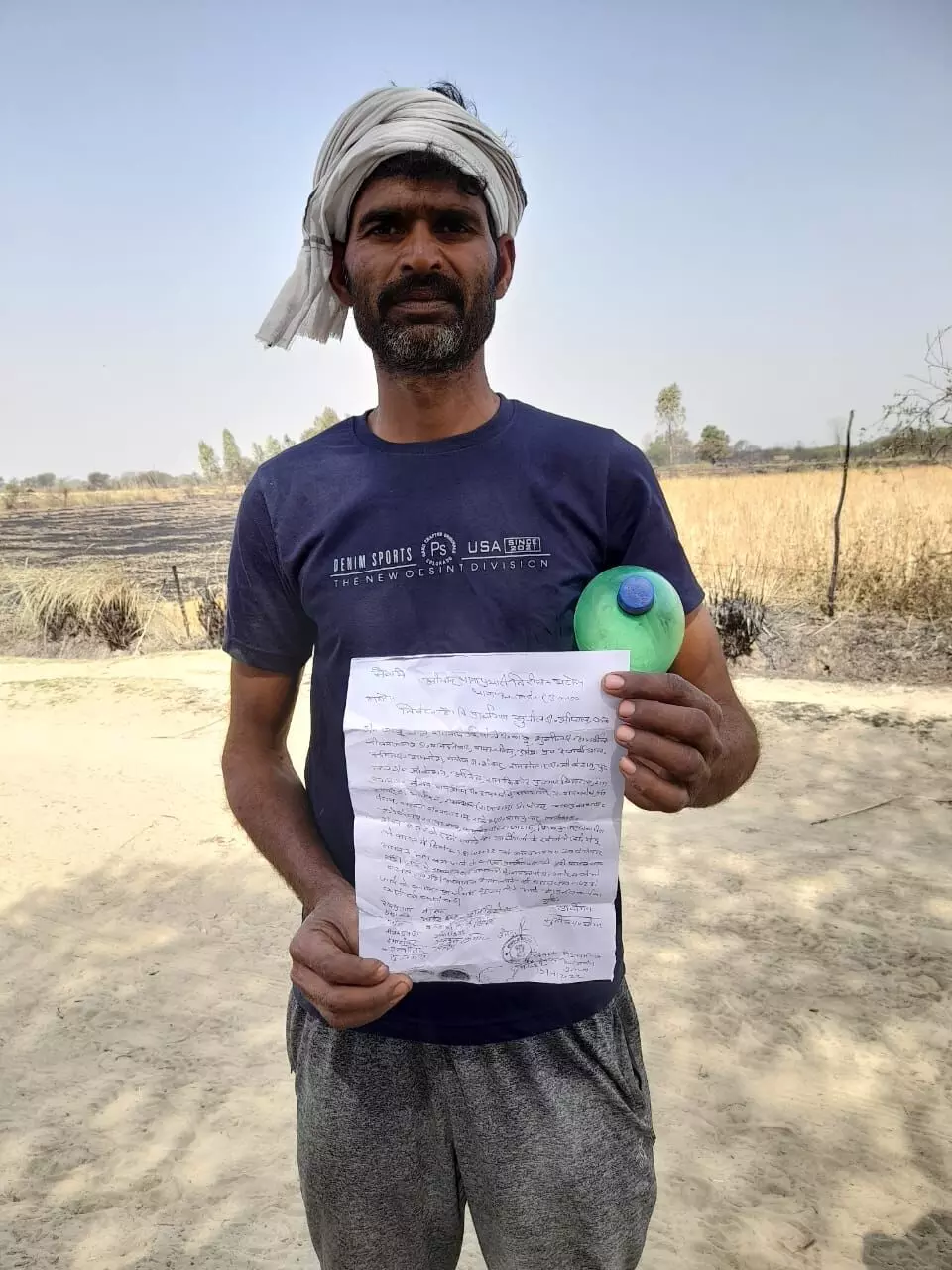
Had the fire engine arrived on time, we wouldn’t have suffered such a loss, said Ram Kishor, Kumar’s 40-year-old neighbour. “Last year, I suffered losses due to the floods and was hoping to get a handsome price for my wheat crop this year. But this fire has sent me back to being a labourer to feed my family,” Kishor said bitterly.
In their defence, the local police personnel said they did the best they could. “We immediately left for Majhra. We tried our best to douse the fire but it was windy that day and the fire spread too fast for us to be able to contain it,” Arvind Singh Raghuvanshi, the incharge at Kolhuhagda police outpost, told Gaon Connection.
“By the time the fire engine reached, it was all over. Nothing helped and the fire engulfed an enormous area,” Raghuvanshi added.
‘Old vehicles, bad roads, vacant posts impede timely response’
When Gaon Connection asked why it had taken the fire service department in Unnao so long to reach Majhra, officials cited a host of challenges.
“I assure you that as soon as we receive a phone call about a fire incident, we jump into action. There is no delay in responding to such crises from our end. But, you need to understand that the traffic and the roads are such that it takes almost forty five to fifty minutes to cover the distance,” Manoj Tiwari, driver of the fire engine that was sent to Majhra (35 kms from the fire station) on April 18, told Gaon Connection.
“The village is situated at a distance of two kilometres from a metalled road. The fire engine is a heavy machine and takes time to move on a kachcha sadak (unmetalled road),” he said. Another reason, he said was that the fire engine in question was 30 years old. “The fire engine we took to Majhra village was brought into service in 1992. You can imagine the challenges of driving such old machinery,” he pointed out.
Officials of the fire service department said that crop fires pose unique challenges. “Fire in a residential building or a factory in an urban setting is comparatively easier to extinguish than a crop fire. A crop fire burns vigorously and is not confined. Also, a ripe crop in such scorching heat is akin to a fuel,” an official told Gaon Connection on the condition of anonymity.
“Often the fire engine has to move while dousing the crop fire as the blaze spreads quickly. This poses a problem as our engine is not equipped to shoot the water jet when in motion,” the official said. “We need an unending supply of water and in the peak summer months, ponds and wells in villages often dry up,” he said.
Meanwhile, the district fire officer in Unnao informed Gaon Connection that there are merely five fire stations in the district that has a population of 3,108,367 people.
“These fire stations are located in Sadar, Bighapur, Purva Hasanganj, Bangarmau and there is a temporary fire station in Safipur. The entire fire department in the district has a total of ten fire engines and a fire fighting motorcycle,” Shivdarash Prasad, district fire officer, told Gaon Connection.
There is also the question of less manpower, the official said.
“On paper there are five posts of fire officer in the district but only one such officer is incumbent. For the posts of second officer, there have to be six officials but only two who are appointed,” a top fire department official in Unnao district told Gaon Connection. “For the position of leading fireman, there are 15 posts but only seven are occupied. Fourteen posts are there for drivers but only nine drivers are actually appointed,” he pointed out.
“Lack of enough personnel for fire operations hampers our efficiency. We just try to operate with the limited manpower we have,” the district fire officer, Prasad, added.

He also said that it was also carelessness amongst the villagers that caused fires.
“People often throw away bidis in the field without ensuring they are extinguished. These incidents can be avoided by being a bit vigilant during the harvest season,” he said.
Crop fire compensation
Anirudhh Kumar, the farmer who lost five bighas of crop in the fire stated that the revenue officials visited his field after the accident and asked the farmers to apply for compensation online.
“We are not educated enough to file online applications. These processes are too tedious for us. I wish the compensation mechanism was a bit easier to understand for farmers like us,” Ramkishor, another farmer standing next to Kumar, said.
Ganga Sagar, a 50-year-old farmer who had lost his crop to a fire accident a few years complained that he was still waiting for his compensation.
“The officials come, they write something down but I haven’t received any compensation yet. Again this year a bigha of my crop was burnt and they have come and gone. I don’t think I’ll get any compensation this time as well,” Sagar said.
The data from the Uttar Pradesh Board of Revenue reveals that, in 2019-20, a total of 202 farmers in Unnao claimed compensation for their burnt crops out of which 180 cultivators were paid Rs 3,014,674.
In 2020-21, a total of 16 farmers claimed such compensation and all of them were provided a sum of Rs 201,800. In the last fiscal year, in 2021-22, 76 farmers applied for compensation while 53 farmers received a total of Rs 717,700.

